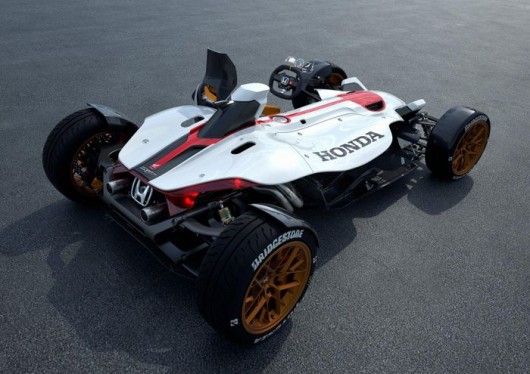BMW and rally
 BMW cars have long become a symbol of style, power and reliability. This year, the legendary Bavarian concern celebrates its 90th anniversary.
BMW cars have long become a symbol of style, power and reliability. This year, the legendary Bavarian concern celebrates its 90th anniversary.
In 1913, on the northern outskirts of Munich, Karl Rapp and Gustav Otto, the son of the inventor of the internal combustion engine Nikolaus August Otto, create two small aircraft engine companies. World War I brought numerous orders for aircraft engines. Rapp and Otto decide to unite into one aircraft engine factory. So in Munich, there is an aircraft engine factory, which is registered on July 21, 1917 under the name Bayerische Motoren Werke (“Bavarian Motor Plants”) – BMW. This date is considered to be the founding year of BMW, and Carl Rapp and Gustav Otto as its creators.
Soon the BMW emblem appeared – a circle divided into two blue and two white sectors, which was a stylized image of a propeller rotating against the sky. It was also taken into account that blue and white are the national colors of Bavaria. Over the past years, this brand name has remained virtually unchanged, except for the font that depicts the letters. Yes, and the residence of the BMW remains in the German city of Munich.
Today, BMW is one of the leaders in producing premium cars. Over a million cars leave the plant’s conveyors annually. The BMW concern, which began with a small aircraft plant, manufactures its products in five factories in Germany and twenty-two subsidiaries scattered around the world. This is one of the few automotive companies that does not use robots in factories. All assembly on the conveyor occurs only manually.
In addition, BMW is the leading manufacturer of sports cars that successfully perform in the formula and body rings, and, of course, in the rally.
And if in the racing circuit BMW traditionally occupies a leading position and fights for titles and prizes, then in the rally everything is somewhat different. It is traditionally considered that BMW in rally competitions is a stranger and a rare guest.
Over its long history, BMW only “touched” the World Rally Championship (WRC) once. Now it is difficult to imagine, however, in the sixties and seventies, the German company seriously engaged in the promotion of one of their cars in this kind of motor sporting competitions.
BMW 2002 was honored to represent the interests of BMW as part of the factory team. The 2002 model began its life under the name 1600-2 in 1966, when the successor to the 1500 model was introduced. Having a new body design, the 1600-2 was equipped with a 1600 cc carburetor engine. In 1967, the 1600 ti version with two carburetors appeared and developed 105 hp.
Then the car survived the “facelift” and continued to be produced under the name 1602. This modification has become very popular – in nine years, 277,000 copies were produced.
BMW has offered a lot of changes aimed at improving the performance of the car. The number of changes was so great, which led in 1968 to the creation of a new car – the BMW 2002.
The 2002 version was equipped with two carburetors, a five-speed gearbox and a 120 hp engine, which was so good that in the future it would be easily tuned.
In 1971, BMW created a special rally office, which focused on the development of the car. The project manager was Helmut Bein – a man who, for the first time in 1966, started a rally behind the wheel of a BMW 1602. Bein clearly imagined the potential of a two-liter car and began negotiations with several well-known pilots to hire a factory team.
Pilots Tony Fall and Rauno Aaltonen brought the BMW 2002 several first victories, but Bane himself made the first serious successes – he became the champion of West Germany in 1969 and 1970.
The “little” BMW was especially good on slippery and gravel roads, but it also felt good on the asphalt, especially since the pilots who spoke all over Europe soon realized that the 2002 nd could easily develop more power thanks to the excellent engine with upper camshafts and suspension.
A further development of the 2002 model was the 2002ti version. The main difference was the fuel injection system, which added 10 horsepower to the engine. The chassis was also improved, the front disc brakes became larger, and the wheels became wider.
While Baine was constantly improving rally cars, the idea of participating in races found less and less understanding in BMW itself, so the rally department started having problems with financing …



